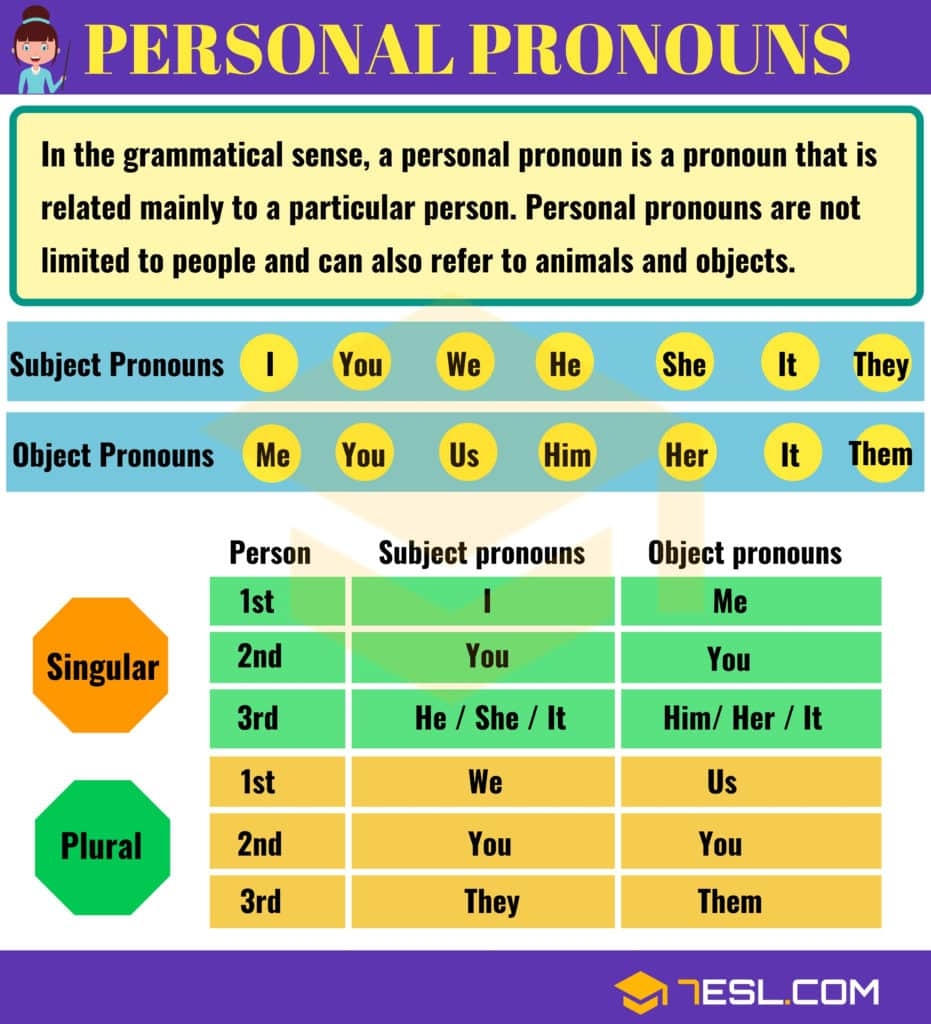Personal pronouns are words that we use to refer to ourselves and others in conversation. They take the place of nouns and can be used to indicate the person speaking, the person being spoken to, or the person or thing being spoken about. There are several different types of personal pronouns that we use in the English language.
Understanding the different types of personal pronouns is important for effective communication, as using the correct pronoun can help to avoid confusion and clarify relationships between individuals. In this article, we will explore a list of all personal pronouns used in English.
List of Personal Pronouns
1. First person singular: I, me, mine
2. First person plural: we, us, ours
3. Second person singular: you, your, yours
4. Second person plural: you, your, yours
5. Third person singular: he, she, it, him, her, his, hers, its
6. Third person plural: they, them, their, theirs
Personal pronouns are essential for clear communication in both spoken and written language. They help to identify who is being referred to and establish relationships between individuals. Using the correct personal pronoun can also show respect and sensitivity towards others.
It is important to be mindful of gender pronouns when referring to individuals, as some people may identify with pronouns that are different from the traditional he/she pronouns. Using inclusive language and respecting individuals’ pronoun choices is a sign of respect and acceptance.
Personal pronouns can also vary based on formality and context. In more formal situations, it is common to use the full pronoun (e.g. “he” or “she”) rather than the contracted form (e.g. “he’s” or “she’s”). Understanding these nuances can help to communicate effectively in different social and professional settings.
In conclusion, personal pronouns play a crucial role in communication by helping us refer to ourselves and others in conversation. By using the correct pronouns and being mindful of gender identity and formality, we can create a more inclusive and respectful environment for all individuals.
